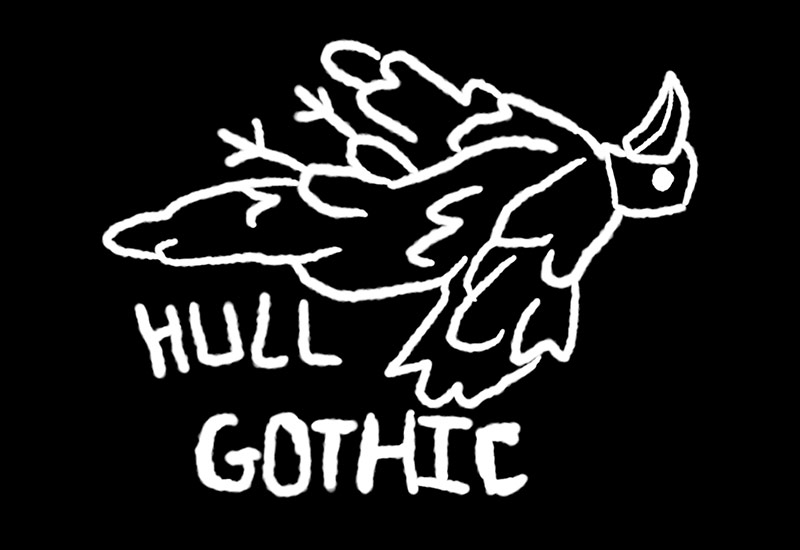Posted October 6, 2025 by Christian Wilken
My First Encounter With the Gothic
My First Encounter With the Gothic, by Christian Wilken
Suddenly the day was gone,
night came out from under each tree and spread.
I can’t claim with certainty what my very first encounter with the Gothic was. Perhaps it was the night in 1994 when my older sister rented The Nightmare Before Christmas on VHS. She was so unsettled that she banned the film from her household for decades — while for me, it opened a door into a dark enchantment that I’ve been chasing ever since. And as 90s kids, we were also given Greg Weisman’s wonderful Gargoyles (1994–1997), the one Disney Afternoon show that truly lodged itself under my skin, where it remains to this day.
But on November 1, 1997, something more formative happened. A ten-year-old boy from the northern German boondocks found himself glued once again to daytime TV. There it was: a cartoon film about Halloween, about time travel to Ancient Egypt, the origins of Samhain and the gargoyles of Notre Dame, culminating in a contemporary Mexican cemetery on El Día de los Muertos. It bore the rather awkward German title Kopfüber in die Geisterstunde (Headfirst into the Witching Hour), a title that only made it harder for me to rediscover the film over the next eighteen years.
I now know that it was a modest Hanna-Barbera production animated largely in Asia. More crucially, it was the brainchild of another lifelong addict of ghost stories: Ray Bradbury of Waukegan, Illinois, better known to some as Green Town. When Bradbury published The Halloween Tree in 1972, it was always with the intention of adapting it into a film for audiences who felt the pull of All Hallows’ Eve. When that dream faltered, he released it as a novel loosely linked to his Green Town trilogy, those semi-autobiographical stories of boyhood in Illinois: bottling Dandelion Wine, braving the uncanny ravine (a liminal zone that also appears in the cartoon), and celebrating the 4th of July with his grandfather, who eventually gave him the bittersweet wisdom of last goodbyes and life’s brevity.
In both novel and film, a group of boys chase the spirit of their friend Pip across time and cultures, guided by the spectral Mr. Moundshroud. Their journey is a meditation on death, tradition, and the eerie beauty of Halloween as a shared inheritance. For the Gothic imagination, it offers everything: crypts and cemeteries, liminal thresholds, uncanny mentors, and the reminder that mortality is the shadow behind every festival light.
Having since taught and examined The Halloween Tree, I now situate its dark existentialism between Kierkegaardian anxiety and Jungian archetype. Yet my fascination is unchanged from that first November afternoon twenty-eight years ago. Bradbury’s story endures for its nocturnal aesthetic, yes, but even more for its courage. When Pip’s friends each give up a year of their lives without hesitation, they acknowledge what awaits us all: horrors, partings, the “undiscovered country”. But they also affirm that this journey can be faced in solidarity: in kinship, in mutual recognition, and in light against the encroaching dark. What first looked like just another cartoon has become, through Bradbury’s words, a lifelong encounter: a reminder that the Gothic is not only about ghosts, but about the beauty of how we speak of them.

